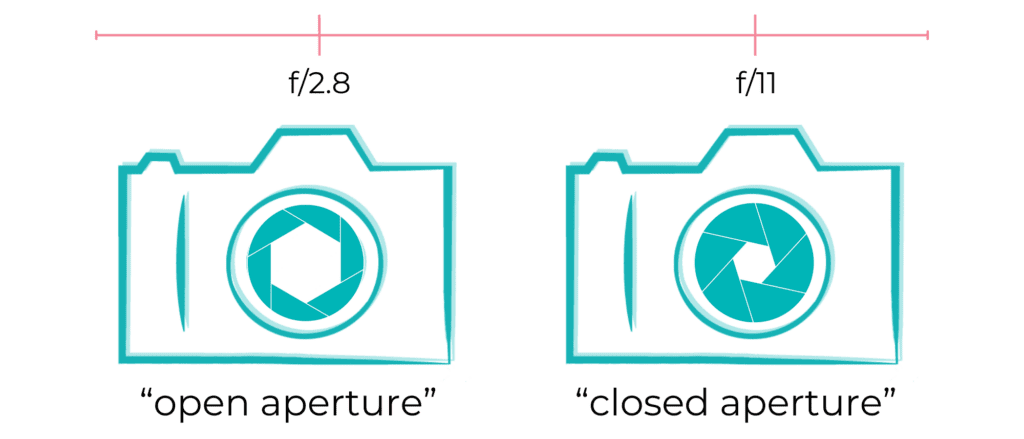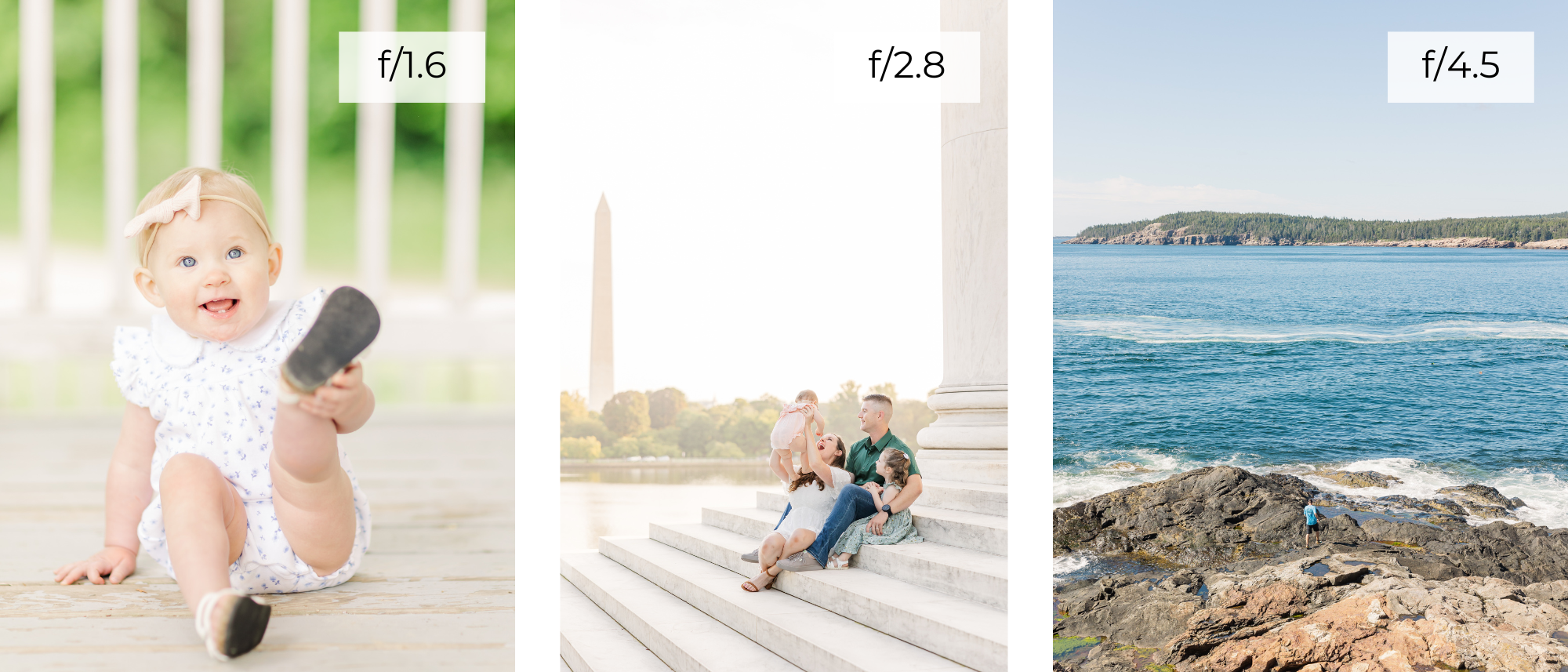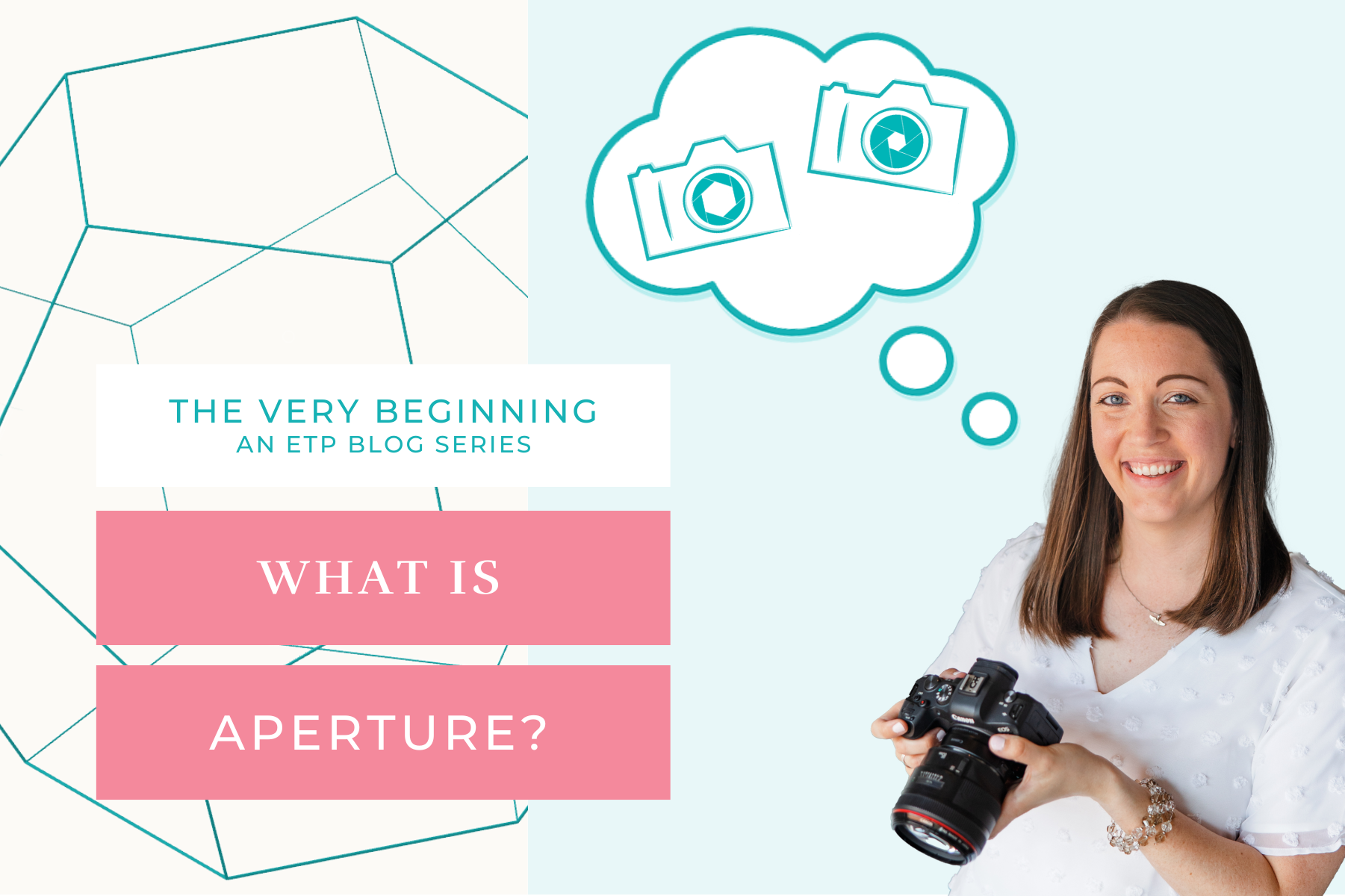The Very Beginning | What Is Aperture?
Welcome back to The Very Beginning! In the last blog post, we discussed what to look for in a starter camera to kickstart your photography journey. Now, we’re diving deeper into the world of photography by exploring the fundamentals. Up first, aperture!
What Is Aperture?
Aperture refers to the opening in your camera’s lens that allows light to pass through and reach the camera’s image sensor. It’s similar to your eye’s pupil, which expands in low light and contracts in bright light to control the amount of light entering the eye. Aperture in photography serves the same purpose – regulating the quantity of light that hits the camera’s sensor.
How to Control Aperture
Aperture is represented by an f-stop value, often displayed as f/2.8, f/5.6, f/11, and so on. The f-stop value is inversely related to the aperture size. This means that a smaller f-stop number (e.g., f/1.8) represents a larger aperture, which lets in more light. Similarly, a larger f-stop number (e.g., f/16) represents a smaller aperture, which lets in less light.

So, what does aperture control in camera?
- Depth of Field (DOF): Aperture plays a significant role in controlling the depth of field in your photos. A wide or open aperture (e.g., f/1.8) creates a shallow depth of field, resulting in that beautifully blurry background we call bokeh. This is perfect for portraits or isolating a subject from its surroundings. On the other hand, a small or closed aperture (e.g., f/16) creates a deep depth of field, ensuring that both the foreground and background are in focus. This is ideal for landscape photography or when you’re taking a portrait in an epic location and want the background to be sharp as well.

- Exposure: Aperture directly impacts the overall exposure of an image. A larger aperture (smaller f-stop number) allows more light to enter the camera, which can be advantageous in low-light conditions. Conversely, a smaller aperture (larger f-stop number) reduces the amount of light entering the camera, suitable for bright, sunny days.
Watch Out!
While adjusting your f-stop provides some creative control in your photos, there are a few things to be cautious about:
- Soft Focus: If you love bokeh in your portraits, you might be tempted to set your f-stop as low as possible. Sometimes this will give you the exact result you want. However, if your focal point is off a bit or if your subjects aren’t in the same focal plane, then you can end up with images that aren’t in sharp focus. Slightly higher f-stops are more forgiving than lower ones.
- The Exposure Triangle: Aperture is just one of three important settings that control the exposure of an image. We’ll talk more about shutter speed and ISO in future posts, but just know for now that adjusting the f-stop impacts the other two settings. If you already have a properly exposed image and you adjust the f-stop, you will need to compensate with one of the other two to maintain the overall exposure.
Recap
As you’ve seen, understanding aperture is a critical piece to learning to shoot in manual mode. In fact, of all the settings I have control over in my camera, aperture is the one that plays the most important role in defining my style. I couldn’t intentionally create beautiful bokeh behind my subjects if I didn’t understand this setting. If you’re going for a similar style, I highly recommend experimenting with different f-stop values to see how they affect your photos. Doing so will not only be good practice, but it’ll allow you to see the limitations of the setting as well.
What’s Next?
Up next in The Very Beginning, we’ll be sticking with the fundamentals and focusing on shutter speed. In the meantime, grab your camera and go practice being intentional with your aperture. If you have any questions along the way, drop them in the comments below or send me a DM on Instagram. I’m here to help and would love to hear from you!
If you enjoyed this post, you may also love:

YES PLEASE!
Getting ready for your next PCS? This resource is for you! Download the guide for five actionable ways to set yourself up for success at your next assignment.
5 Ways to PCS-Prep your photography business
Getting ready for a PCS?
Getting ready for a PCS?
free download!
I HAVE A LITTLE SOMETHING FOR YOU!
I've been navigating military life with my family since 2008. In that time, I went from a full-time classroom teacher to an online course designer to a photographer. Actually, I still teach a little math on the side because I just love it too much!
Through it all, I've discovered how passionate I am about connecting with military families. Whether it's taking photos at a retirement ceremony, coaching a fellow milspouse photographer, or just grabbing coffee with a new squadron friend, I love this community. And as a teacher at heart, I'm excited to use this space to share what I've learned about business and life with you.
I'M ERIN.